Intel D955XBK layout and features
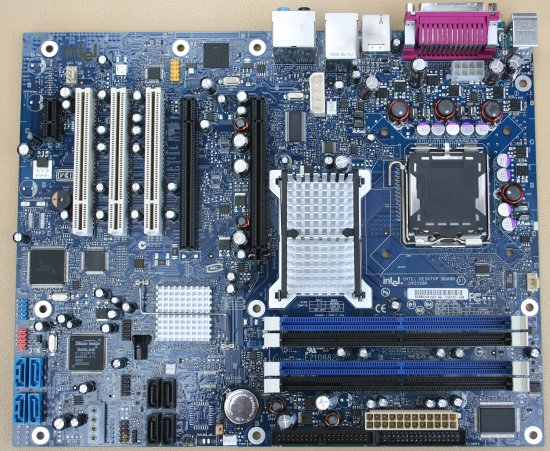
Who better than the chipset designer to make a fully-fledged i955X motherboard? Intel's desktop motherboards tended to be simple showcases for its newest iteration of chipsets, and, consequently, often missed out on the featured tacked on by chipset partners like ABIT and EPoX. The D955XBK, however, is designed to change all that.
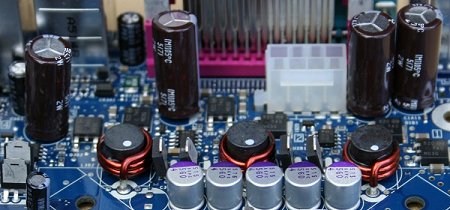
Looking at the top-right portion first, with a view over the 4-phase PWM supply, we see that Intel uses an 8-pin (2x4) 12v power connector that's in line with ATX 2.0 spec. You needn't worry if your power supply only has a 4-pin 12v connector, as Intel provides the necessary 8-to-4-pin adapter in the bundle. There's plenty of room around the CPU socket which is dwarfed, on the left-hand side, by a massive. passive heatsink. It's the largest we've seen thus far, and Intel has enough confidence in its cooling ability to forego the usual fan on top.
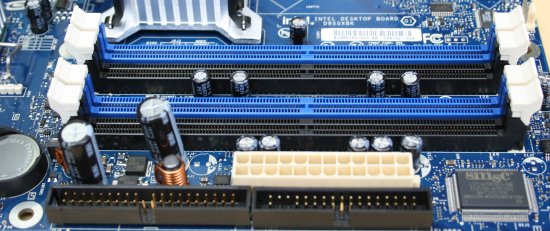
The heatsink is big enough to almost encroach on the PCB space alloted to the 4 DIMM slots. Of course, being an i955X motherboard, the D55XBK supports up to 8GB of DDR2 memory (both non-ECC and ECC) in the preferable, performance-enhancing dual-channel mode. The Memory Controller Hub, covered by the massive heatsink, controls accesses between system RAM and your chosen LGA775 CPU. The location of the primary IDE port and legacy floppy are both good.
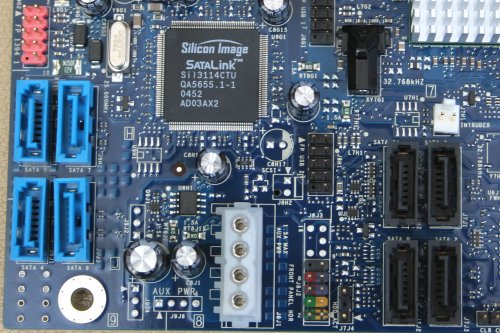
Moving on to the left, passed the CMOS battery and one of the board's four fan headers, we stumble upon SATA galore. The heatsink-covered ICH7/R southbridge powers the 4 black ports to the right. As you no doubt know, the ICH7/R supports SATA2 protocol, offering up such nicities as Native Command Queuing, 3GBps throughput, and hot-swapability. A further four ports, blue-coloured, are available from the tried-and-tested Silicon Image Sil3114 controller; it's kind of hard to miss, situated right in the middle. However, whereas the Intel D955XBK 'outports' both the ABIT and Gigabyte boards, it does so by using a PCI-based controller, and not the preferable PCI-Express implementations on the aforementioned two. You probably won't soak up the bandwidth available on the PCI bus, but Intel should really have invested in the newer S.I. ASIC, the Sil3134.
Complementing the board's 8 USB 2.0 ports is 3-port FireWire that's run off the same Texas Instruments combination as found on the ABIT AW8-MAX. Specifically, that entails 2 1394a ports and a single, faster 1394b, aka FireWire800.
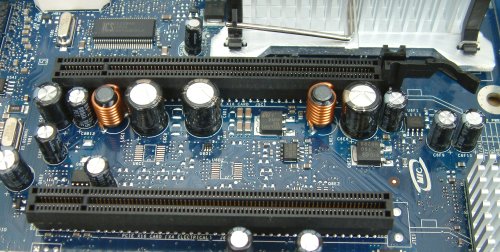
Looking up past the single x1 PCIe slot and a trio of PCI slots are 2 longer PCI-Express slots. SLI or CrossFire compatibility? Unfortunately not for SLI at the moment but ATI has announced support for its delayed CrossFire dual-card setup. The upper slot is a regular x16 used by every PCIe graphics card under the sun. The lower slot, albeit a x16 connector, can use up to 4 lanes (x4). There's no present certification for dual-card running, although you can use the x4 slot for expanded display options.
Intel also adds in Gigabit Ethernet support from its 82573V ASIC. The ICH7/R's High-Definition Audio is routed via Sigmatel CODEC. The sound is then routed out to the I/O section.
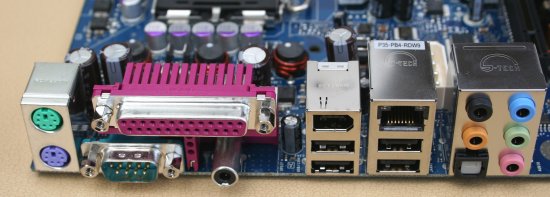
Speaking of which, here it is. Intel goes with a mixture of legacy and high-speed ports. From left to right, we have the ubiquitious PS/2 ports, alongside Parallel and Serial ports. Moving further right, Intel adds in S/PDIF support through coaxial-out. 4 USB 2.0 ports sit underneath a single 1394a port and RJ45 connector. Lastly, 8-channel audio support is helped by optical-out.
A smattering of extra features helps turn the otherwise reference-like D955XBK motherboard into a real retail contender, and it scores points for having a 3-year warranty, common on most Intel boxed motherboards. It doesn't have some of the more esoteric features found on the Gigabyte and ABIT models, but has enough to keep most users happy, especially with CrossFire around the corner (how many times have we said that?)









